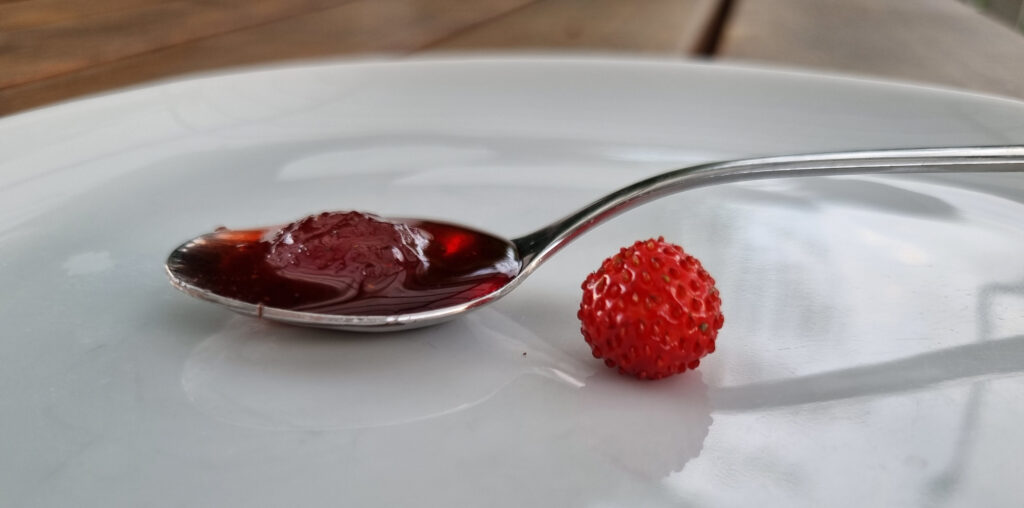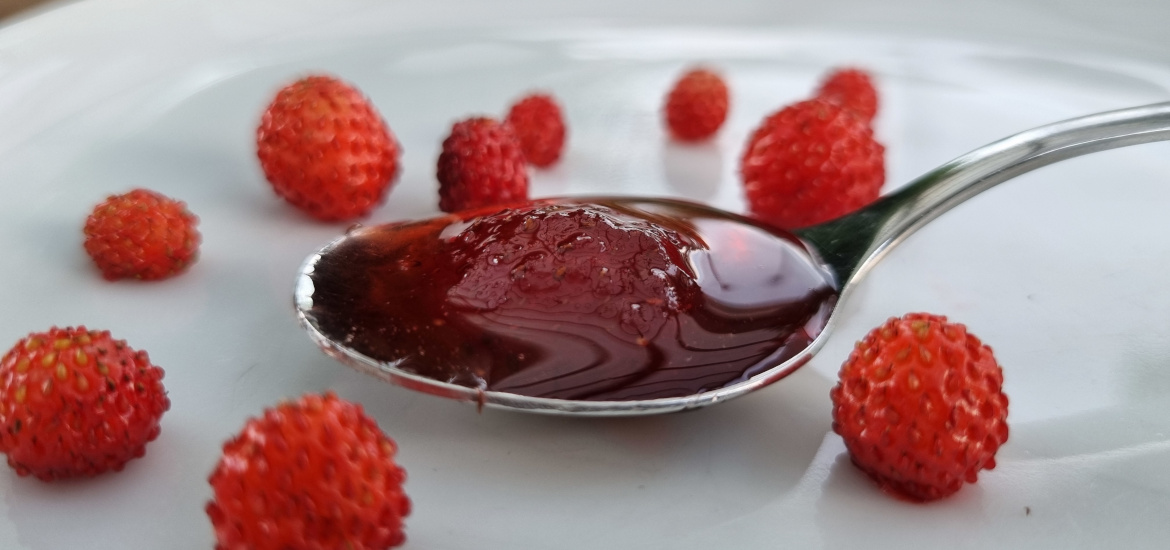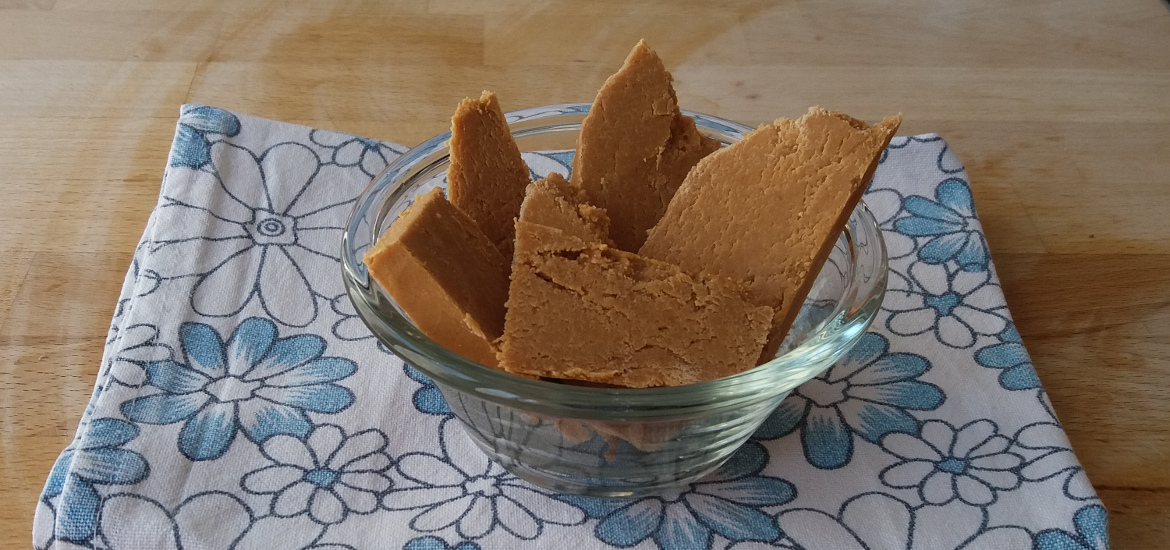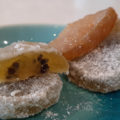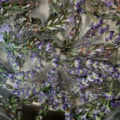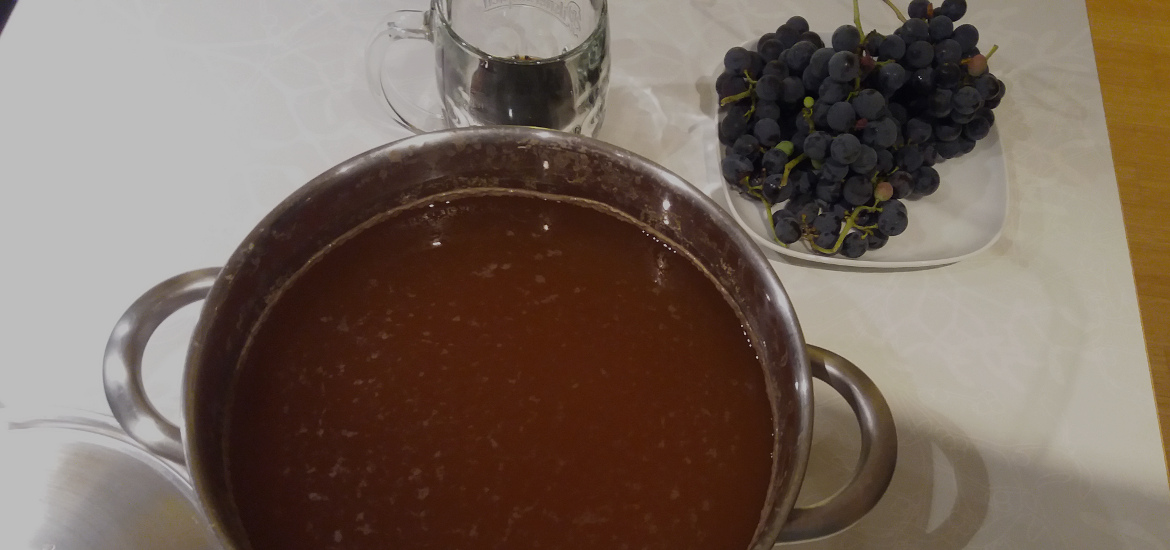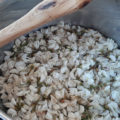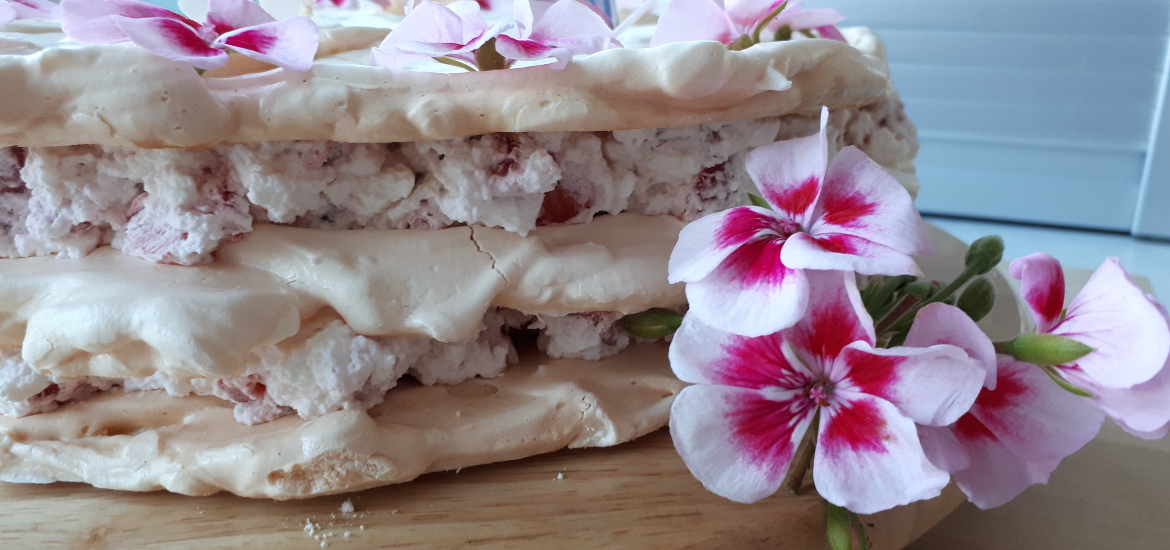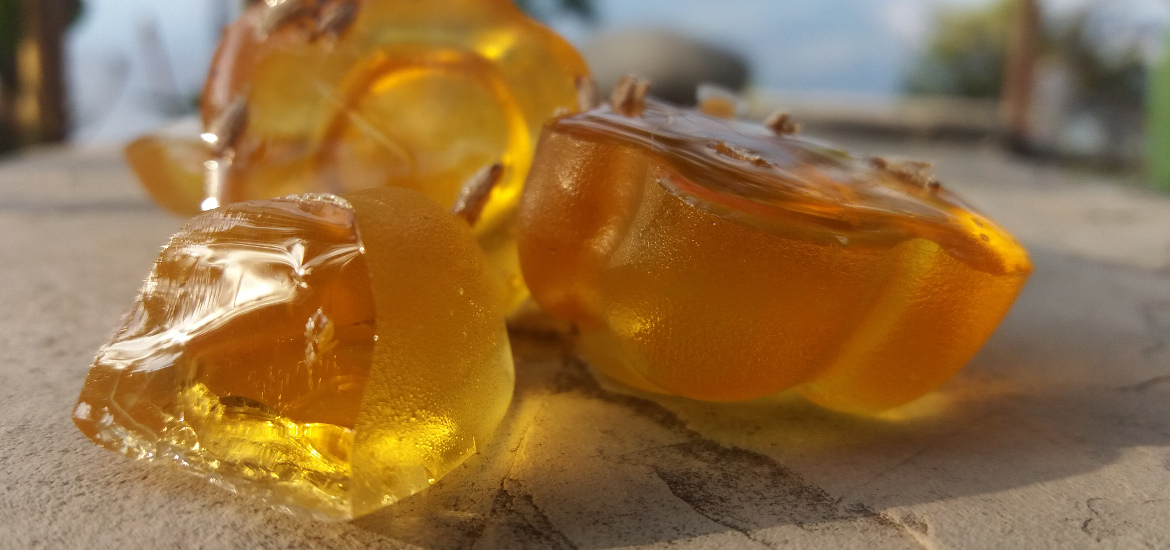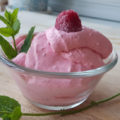There are many ways to preserve fruit. You can either freeze, dry or can it. Another option is to prepare candied fruit, or alternatively store fruit in syrup. With syrup we have to be more careful as with the candied fruit, since it contains more water and can thus be spoiled more easily. In general, microorganisms stop growing when the sugar (sucrose) concentration is rising above 50% w/w. First bacteria stop growing (no growth above 60%), then yeast (no growth above 65%) and finally molds. Since the maximum solubility of sugar in water is around 66%, we need to be close to that value to prevent most microorganisms from growing.
The problem is when you add the fruit to the sugar solution, you do not know what the final concentration of sugar is, since there is a varying amount of water in the added fruit. Luckily, there is an easy way to determine the amount of sugar during cooking. Sugar (sucrose) content in water can be measured with different methods, as excellently described here. For our purposes boiling temperature is the easiest way, so I double checked the temperatures here. So the basic principle is easy: dissolve sugar in water, add fruit and slowly boil until the desired temperature is reached. The temperature should be around 104-105 °C to be in the range of 65% of sucrose. A drop of lemon is also desired to prevent potential crystallization and improve microbial stability by decreasing the pH. So, on to the examples.
Strawberries in syrup
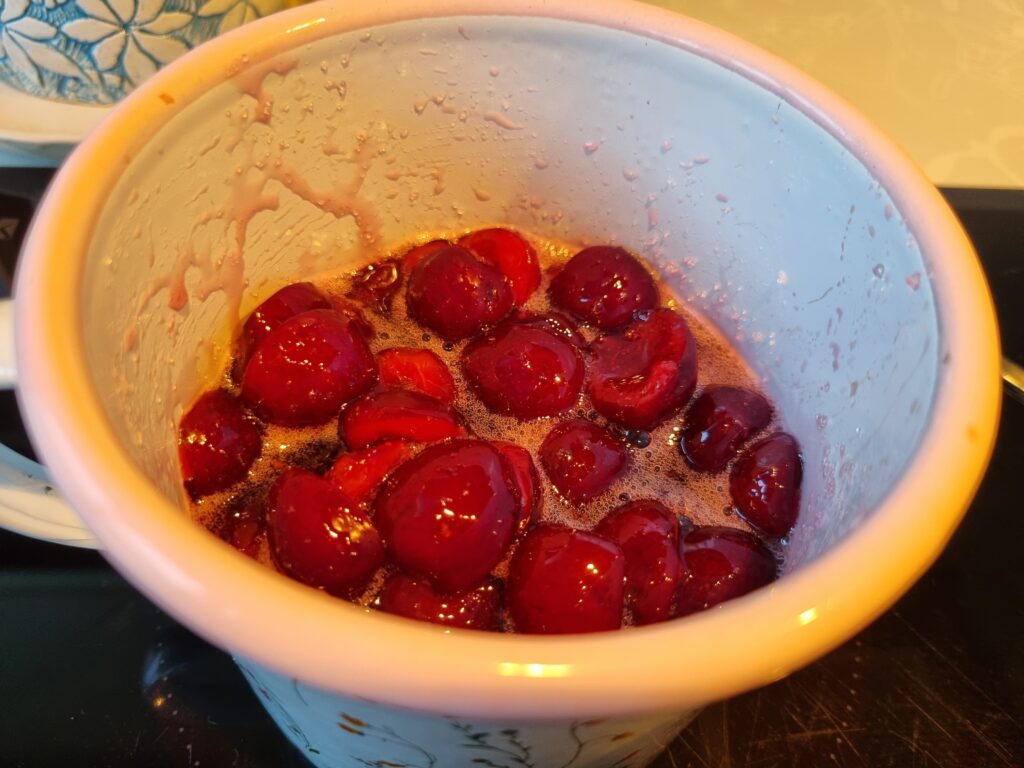
I started with 100 mL of water and 200 g of table sugar. I heated up the water and mixed, until all the sugar dissolved. The boiling temperature of this solution was around 102 °C. Next, 200 g of strawberries were added and cooked on low heat. The temperature of the mixture was around 100 °C when it first started to boil. This is expected, since strawberries contain a lot of water (around 91%) and this additional water decreases the boiling point. The mixture was continuously kept on low boil for 2 hours, to allow the excess water to evaporate. Next time it might be a good idea to reduce the starting amount of water, to reduce the final boiling time.
Cherries in syrup
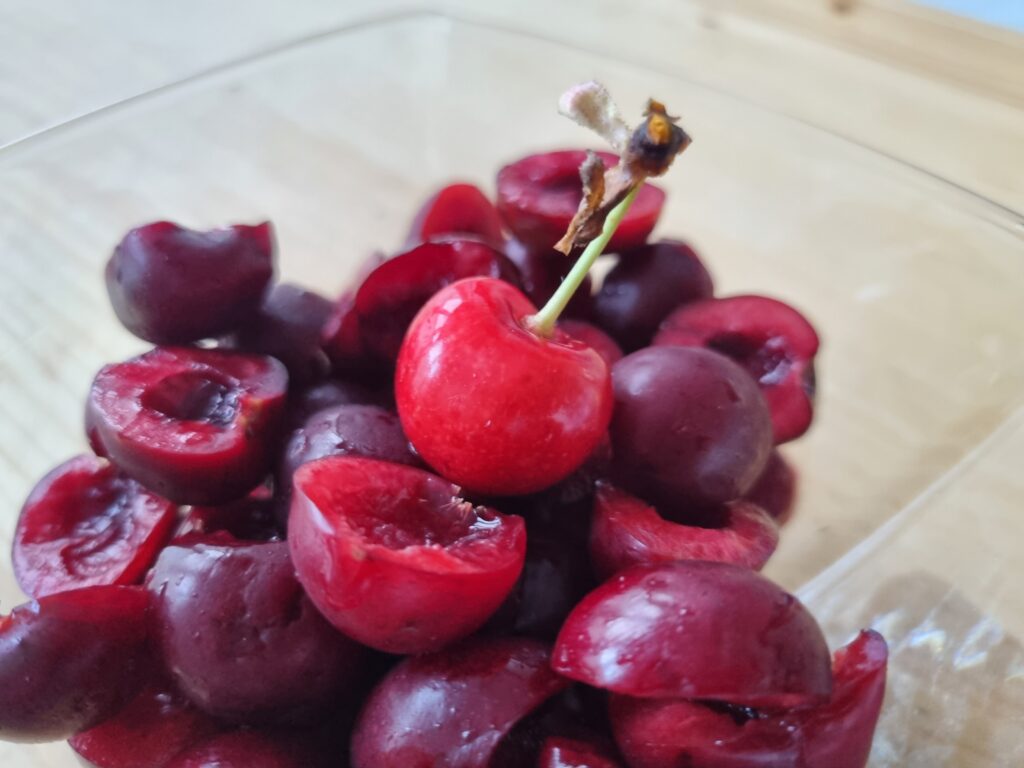
I started with 30 mL of water and 200 g of table sugar. Next, 200 g of pitted cherries were added. The mixture was thick, but soon turned liquid upon heating and mixing. Probably no addition of water is needed in the future. A splash of lemon was also added (around 30 drops of lemon juice). The temperature of the mixture was around 102°C when it first started to boil. The temperature was higher compared to the strawberry experiment, since less water was added. But even so, it took more than an hour of slow boiling to reach 105 °C. Of note is also strong foam formation in the beginning, which requires constant mixing in order not to boil over the top of the saucepan. Final result was comparable to strawberries – finely cooked cherries in super sweet sauce. Just as intended.
Recipe for fruit in syrup
This is a general recipe for any fruit, based on my experiments described above. The main thing for this recipe is fruit and sugar in the approximate ratio 1:1. This will result in a mass of approximately ⅓ fruit pieces and ⅔ sweet fruit syrup. You can also increase the fruit ratio to get more fruit pieces. The majority of fruits have a water content of around 80-95%. This is more than enough for this recipe, but if you are using fruit with lower water content, you can add some water in the beginning to aid the dissolution of sugar and prevent sticking at the bottom of the pan. No matter how much water you add, in the end you will have to boil the syrup until it reaches 105 °C. The more water you add – directly or with the fruit – more time you will have to cook (boil) the syrup. Nevertheless, the end result will always be syrupy, sweet and delicious!
